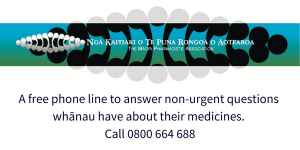Flucloxacillin is an antibiotic used to treat infections caused by bacteria. Examples of infections flucloxacillin may be used for include skin infections such as cellulitis. Flucloxacillin works by killing or stopping the growth of bacteria (bugs). Flucloxacillin belongs to a group of antibiotics called penicillins. Like all antibiotics, flucloxacillin is not effective against infections caused by viruses.
For information on how to give amoxicillin to children, see flucloxacillin information for parents and carers.(external link)
Low or no data? Visit zero.govt.nz, scroll down the page then click on our logo to return to our site and browse for free.
Flucloxacillin
Sounds like 'flu-CLOX-i-SIL-in'
Key points about flucloxacillin
- Flucloxacillin is an antibiotic used to treat infections caused by bacteria.
- It is a penicillin antibiotic.
- Flucloxacillin is also known as Staphlex® or Flucloxacillin (AFT)®.
- Find out how to take it safely and possible side effects.

In Aotearoa New Zealand flucloxacillin is available as capsules (250 mg and 500 mg) and liquid and can be given as an injection in the hospital.
- The dose of flucloxacillin will be different for different people depending on the type of infection.
- The usual dose of flucloxacillin capsules in adults is 500 mg 4 times a day. Some people may need a higher dose.
- Your doctor will advise you on how long to take flucloxacillin for (usually 5–7 days).
- For most infections, you should feel better within a few days.
- Always take your flucloxacillin exactly as your doctor has told you. The pharmacy label on your medicine will tell you how much to take, how often to take it, and any special instructions.
Flucloxacillin is best taken on an empty stomach, one hour before eating food or at least 2 hours after. This is because your body may absorb less flucloxacillin after a meal, making it less effective.
- Swallow the capsule with a glass of water (200–250 mLs). Do not chew them.
- Timing: Take flucloxacillin at the same times each day. Try to space your doses evenly throughout the day. For example, for 4 times a day dosing take, first thing in the morning (before breakfast), at around midday (before lunch), late in the afternoon (before tea) and at bedtime.
- Missed dose: If you forget to take your dose, take it as soon as you remember. But, if it is nearly time for your next dose, take the next dose at the right time. Do not take extra doses to make up for a forgotten dose. If you are not sure what to do, ask your healthcare provider.
- Alcohol: You can drink alcohol while taking flucloxacillin. Avoid heavy or binge drinking because it can increase your risk of side effects such as nausea and vomiting.
- Complete the course: Take the whole course of antibiotics for the number of days your doctor has told you to. Do not stop taking it, even if you feel your infection has cleared up. If you stop your treatment early, your infection could come back.
Like all medicines, flucloxacillin can cause side effects, although not everyone gets them. Often side effects improve as your body gets used to the new medicine.
Allergic reaction
Tell your healthcare provider if you have had an allergic reaction to a medicine, especially a penicillin antibiotic. True penicillin allergy is rare – fewer than 5 out of 10,000 people are allergic to penicillin.
Most people who think they have a penicillin allergy do not – read more about penicillins and penicillin allergy).
If you develop signs of an allergic reaction such as skin rash, itching, swelling of your lips, face and mouth, or difficulty breathing, stop taking amoxicillin and seek immediate medical attention.
Other side effects
| Side effects | What should I do? |
|---|---|
|
|
|
|
|
|
|
|
|
|
| For more information on side effects, see the Medsafe consumer information leaflets below. Did you know that you can report a medicine side effect to the Centre for Adverse Reactions Monitoring (CARM)? Report a side effect to a product.(external link) |
|
The following links have more information on flucloxacillin:
NZ Formulary, NZ
- For adults: Flucloxacillin(external link) (te reo Māori(external link))
- For children: Flucloxacillin(external link) New Zealand Formulary for Children
Medsafe Consumer Information, NZ
Staphlex(external link)
Flucloxacillin (AFT)(external link)
Apps/tools
Flucloxacillin paediatric dose calculator
References
- Flucloxacillin(external link) NZ Formulary, NZ
- Antibiotics – choices for common infections(external link) BPAC, NZ, 2021
Credits: Sandra Ponen, Pharmacist, Healthify He Puna Waiora. Healthify is brought to you by Health Navigator Charitable Trust.
Reviewed by: Maya Patel, MPharm PGDipClinPharm, Auckland
Last reviewed:
Page last updated:





